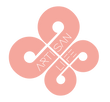About the Tagua Seed

Tagua, also known as vegetable ivory, is a seed that comes from thePhytelephas Macrocarpa palm tree, an endangered palm tree that only grows in the tropical rainforests of the South American Pacific coasts. Etymologically, the term Phytelephas Macrocarpa is derived from the Greek phyton: plant and elephas: elephant, making reference to the ivory.
The tagua palm tree grows in the humid rainforest, under the canopy, to a height of 20 to 30 feet. The tagua seed ranges in size from a cherry to a grapefruit and average about the size of a walnut. Chemically they are pure cellulose and before the nuts mature they have a milky sweet liquid in the centre that can be consumed. The ivory nut is close grain and very hard. The cellular structure and grain is similar to that of elephant ivory, but is more dense and resilient. It resembles the finest ivory in texture and colour and is slightly softer than mammal ivory and usually contains a void in the centre of the nut.
When ripe the nuts fall to the ground and are gathered and dried for a period of up to 2-4 months after which they become extremely hard (ivory like). The nuts are harvested after they are ripe and have fallen to the ground which means no damage is done to the rainforest during the production process.
The tagua seed has more to offer: the fine dust produced by working the nut serves as an enrichment of live stock feed. Most importantly, tagua is replacing the slaughter of mammal ivory (elephants and other) in the textile and fashion industries. In one year, one tagua palm produces as much ivory as an average female African elephant.

History
For over two hundred years vegetable ivory has been used by ivory carvers in the making of dice, dominoes, and chess pieces. Other uses found were cane and umbrella handles, pipes, mah-jongg tiles, sewing needle cases and the fine art of scrimshaw. In the late eighteen hundreds up through World War II this ivory nut was used to make some of the finest buttons in the clothing industry. For close to eighty years the ivory nut was a commodity of global importance and factories on three continents used to manufacture articles of utility and luxury.
More recently, the use of vegetable ivory had virtually disappeared with the increased popularity and reduced costs of plastics. It is still popular with carvers in Japan, but increasingly rare. Ecuador has maintained the industry to a certain extent, but it remains relatively latent. Today, however, vegetable ivory has become increasingly important as the only natural alternative to mammal ivory in the fashion and textile industries.

Production Process
When ripe the nuts fall to the ground and are gathered and dried for a period of up to 2 - 4 months after which they become extremely hard. The tagua seed needs to be dried naturally to separate it from its shell; if it is dried in an oven the final product becomes brittle. Once separated from the shell it has a dark skin which must be removed to reveal the beautiful ivory colour. With a bit of polishing the nut has a fantastic finish. The tagua seed can then be cut into different shapes and forms. It is also possible to dye the seed in a variety of different natural colours. This process reveals the structure and veins of the pure cellulose material giving each piece an individual aspect and a natural look.


